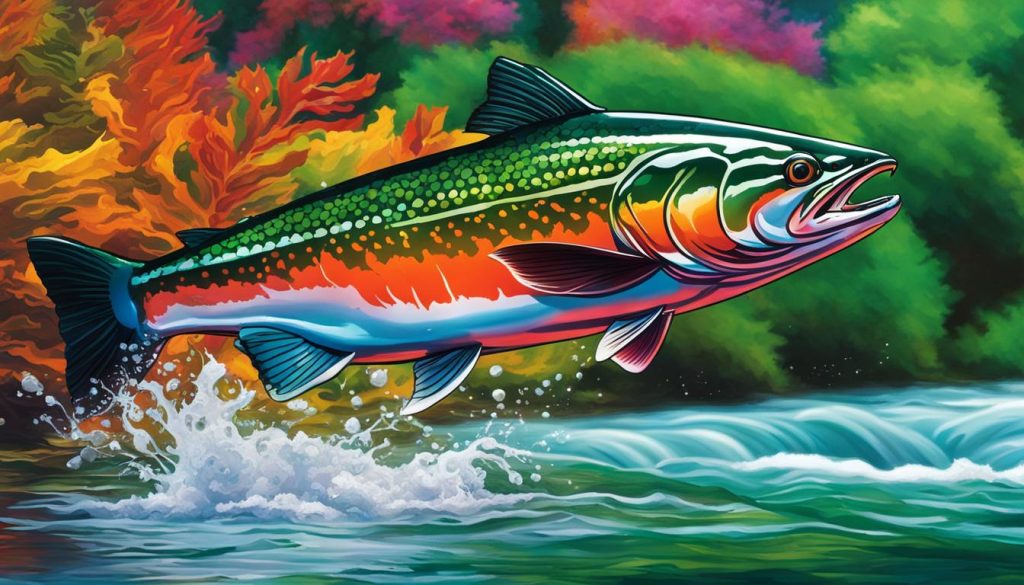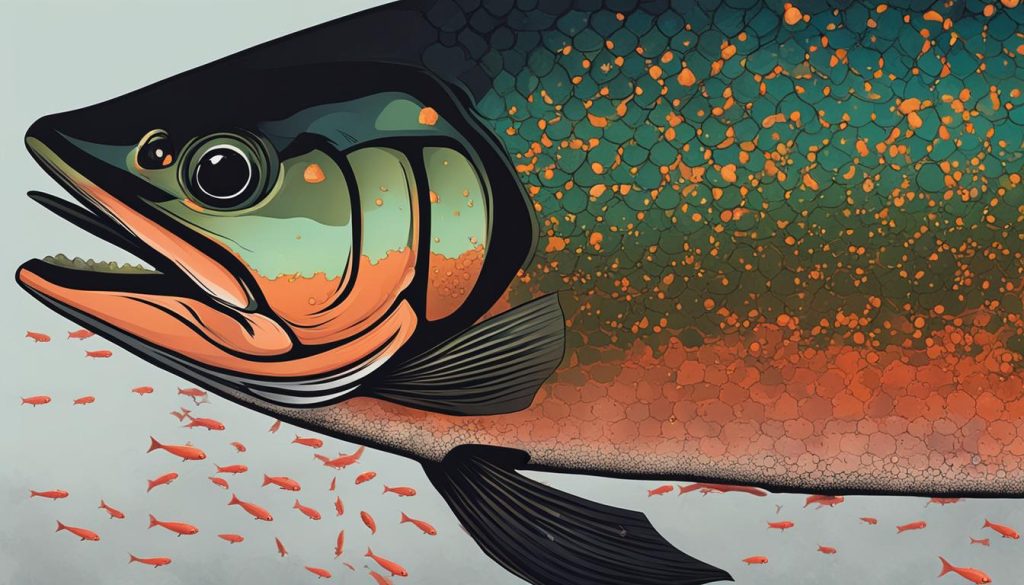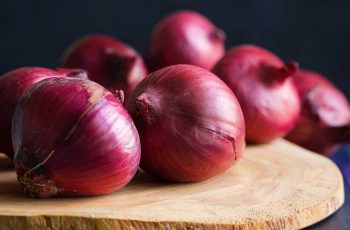When it comes to choosing between wild salmon and farmed salmon, there are several factors to consider. Not only do they have different nutritional profiles, but they also have their own set of advantages and disadvantages. Let’s dive into the details to help you make an informed decision about wild salmon vs farmed salmon.
Wild Salmon vs Farmed Salmon -Which is Better?
- Wild salmon and farmed salmon offer different nutritional profiles.
- Wild salmon has fewer calories and less saturated fat compared to farmed salmon.
- Both types of salmon are rich in omega-3 fatty acids, but farmed salmon often has higher levels.
- Wild salmon has lower levels of persistent organic pollutants (POPs), cancer-causing chemicals, contaminants, and antibiotics.
- Farmed salmon can be more readily available and affordable.
- Consider the nutritional differences and potential environmental impacts when choosing between wild and farmed salmon.
Wild Salmon vs Farmed Salmon: Types of Salmon
When it comes to salmon, there are several different types available in the market. These include wild-caught salmon and farmed salmon, each with its own distinct characteristics and qualities.
Wild-Caught Salmon
Wild-caught salmon refers to salmon that is caught in its natural habitat, typically in rivers, oceans, or other bodies of water. There are five main species of wild-caught salmon: chinook (king), sockeye, coho, pink, and chum. Among these species, sockeye is the most common.
Farmed Salmon
Farmed salmon, on the other hand, is salmon that is raised in aquaculture farms. The most commonly farmed salmon is Atlantic salmon. Unlike wild-caught salmon, which roam freely in their natural environment, farmed salmon is raised in controlled conditions, providing a more abundant and consistent supply of salmon to the market.
Both wild-caught and farmed salmon have distinct characteristics that impact their nutritional profiles and environmental impact. Understanding these differences can help you make informed choices when purchasing and consuming salmon.
- Wild-caught salmon: chinook, sockeye, coho, pink, chum
- Farmed salmon: Atlantic salmon
Nutritional Differences
When comparing the nutritional content, wild salmon and farmed salmon have some key differences in their nutritional profiles.
Calories: Wild salmon generally contains fewer calories than farmed salmon, making it a healthier option for those watching their calorie intake.
Fat Content: Wild salmon also tends to have lower fat content, including saturated fat, compared to farmed salmon. This makes it a good choice for individuals looking to reduce their fat consumption.
Omega-3 Fatty Acids: On the other hand, farmed salmon has higher levels of omega-3 fatty acids. These fatty acids are essential for heart health and have numerous other benefits for the body.
Both wild and farmed salmon are excellent sources of protein and essential nutrients. However, the specific amounts and ratios of these nutrients may vary between the two types.

Environmental Impact
The environmental impact of wild and farmed salmon is significantly different. Harvested from natural environments, wild salmon is caught using sustainable fishing practices that aim to maintain population balance and protect the ecosystem. On the other hand, salmon farming involves raising salmon in artificial environments, which can lead to various environmental concerns.
- Wild Salmon Environmental Impact: By choosing wild-caught salmon, you support sustainable fishing practices and help minimize the environmental impact. Wild salmon fishing methods focus on preserving the natural habitat and maintaining the health of wild populations.
- Farmed Salmon Environmental Impact: Salmon farming can have negative consequences for the environment. It often involves densely packed fish populations, leading to pollution of waterways due to waste accumulation. Disease transmission is also a significant concern in fish farms, sometimes requiring the use of antibiotics and pesticides.
Considering the environmental impact is essential when choosing between wild and farmed salmon. Opting for sustainable fishing practices and supporting wild-caught salmon can help protect natural ecosystems and promote a more environmentally conscious approach to seafood consumption.
Contaminant Levels
When it comes to the levels of contaminants in salmon, both wild and farmed varieties may contain pollutants, although the concentrations can vary.
Wild Salmon: Studies suggest that wild salmon generally has lower levels of contaminants compared to farmed salmon. This is due to the fact that wild salmon live in their natural habitats, where they are exposed to fewer pollutants. As a result, wild salmon tends to have a lower risk of containing harmful substances.
Farmed Salmon: On the other hand, farmed salmon, particularly Atlantic salmon, is more likely to have higher levels of persistent organic pollutants (POPs), including PCBs. These pollutants can pose health risks when consumed in excessive amounts.
- Atlantic salmon, being one of the most commonly farmed salmon species, has been found to have relatively high levels of PCBs.
- The contaminants in farmed salmon can be attributed to their artificial environment and the feed they consume.
- Farm-raised salmon is often given a concentrated diet that can contain contaminants, leading to higher pollutant levels in their flesh.
It is important to consider these differences in contaminant levels when making choices about the type of salmon to consume. While both wild and farmed salmon have their own benefits and drawbacks, individuals may opt for wild salmon if they are concerned about the potential health effects of contaminants.

Antibiotic Use
One concern with farmed salmon is the use of antibiotics. Due to the crowded conditions in fish farms, farmed salmon are more susceptible to infections and disease, leading to the use of antibiotics. Although regulations exist to control antibiotic use, there is still uncertainty about the extent of antibiotic use in salmon farming. This raises concerns about the development of antibiotic resistance and potential health risks associated with consuming farmed salmon.
Conclusion
When it comes to the wild salmon vs farmed salmon comparison, several factors need to be considered. The health benefits of wild salmon cannot be overstated. With lower calorie and fat content, wild salmon is a great choice for those watching their intake. It also contains fewer contaminants, making it a healthier option. From an environmental standpoint, wild salmon has a lower impact. Sustainable fishing practices ensure the preservation of natural habitats and ecosystems.
On the other hand, farmed salmon has its advantages. It is more readily available and often more affordable, making it accessible to a wider consumer base. Farmed salmon also tends to have higher omega-3 fatty acid content, which is beneficial for heart health.
Ultimately, the decision between wild and farmed salmon depends on individual priorities. If health benefits and environmental impact are important to you, then wild salmon is the clear winner. However, if accessibility, affordability, and higher omega-3 fatty acid content are the primary considerations, then farmed salmon may be the preferred choice. It’s always a good idea to weigh the pros and cons and make an informed decision based on your own preferences and values.
FAQ
What are the nutritional differences between wild salmon and farmed salmon?
Wild salmon generally has fewer calories and less fat, including saturated fat, than farmed salmon. However, farmed salmon tends to have higher levels of omega-3 fatty acids.
What are the different types of salmon available?
There are five species of wild-caught salmon: chinook (king), sockeye, coho, pink, and chum. Farmed salmon is typically Atlantic salmon.
What is the environmental impact of wild salmon and farmed salmon?
Wild salmon is harvested from natural environments and supports sustainable fishing practices. Salmon farming can lead to pollution, disease transmission, and the use of antibiotics and pesticides.
Do wild and farmed salmon have different levels of contaminants?
Yes, farmed salmon, particularly Atlantic salmon, often has higher levels of persistent organic pollutants (POPs). Wild salmon generally has lower levels of contaminants.
Are antibiotics used in salmon farming?
Yes, due to crowded conditions in fish farms, farmed salmon are more susceptible to infections and disease, leading to the use of antibiotics. There are concerns about antibiotic resistance and potential health risks associated with consuming farmed salmon.
Which type of salmon should I choose: wild or farmed?
The choice between wild and farmed salmon depends on individual priorities, such as health benefits, sustainability, and taste preferences. Wild salmon offers lower calorie and fat content, fewer contaminants, and a lower environmental impact. Farmed salmon may be more readily available, affordable, and have higher omega-3 fatty acid content.




